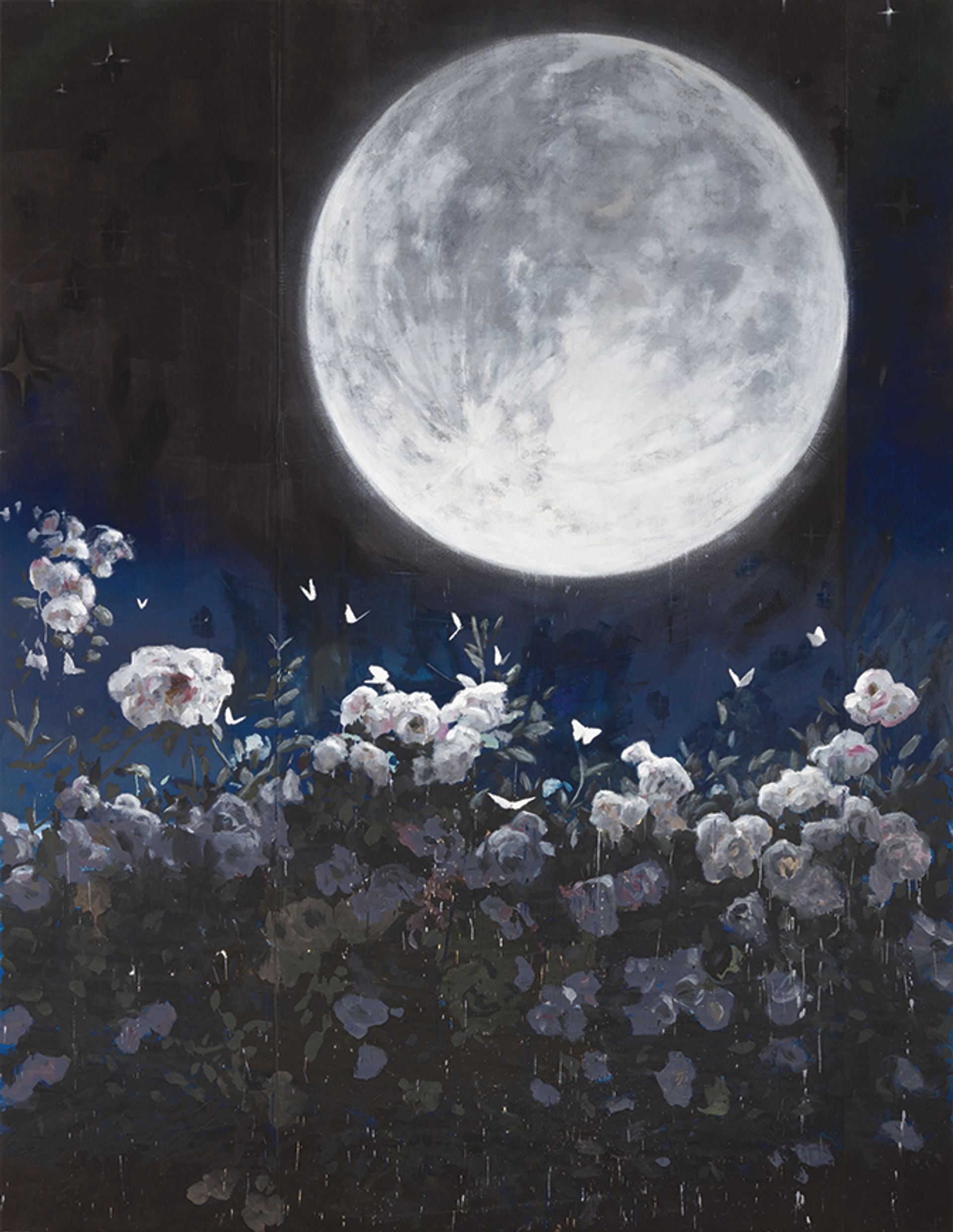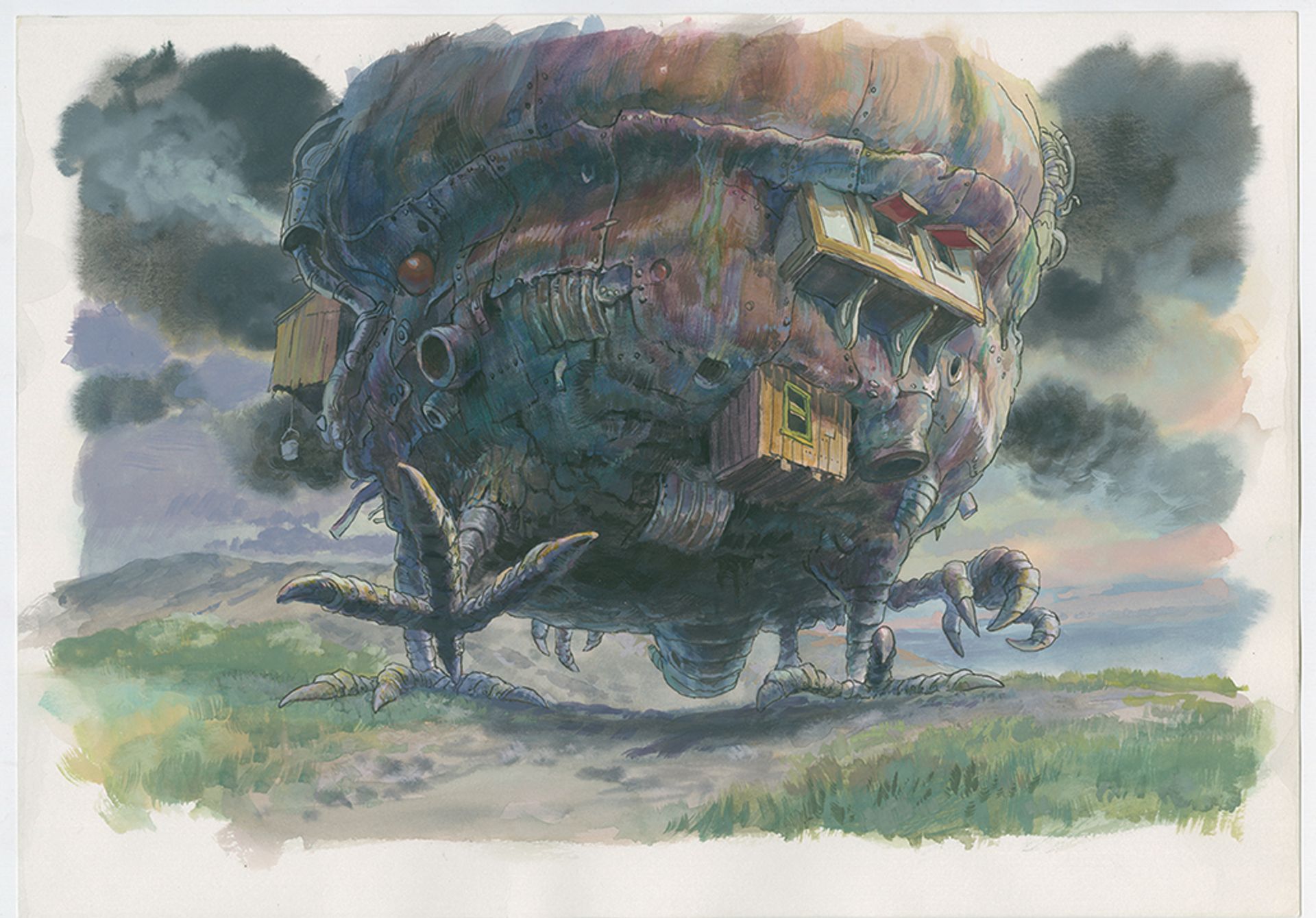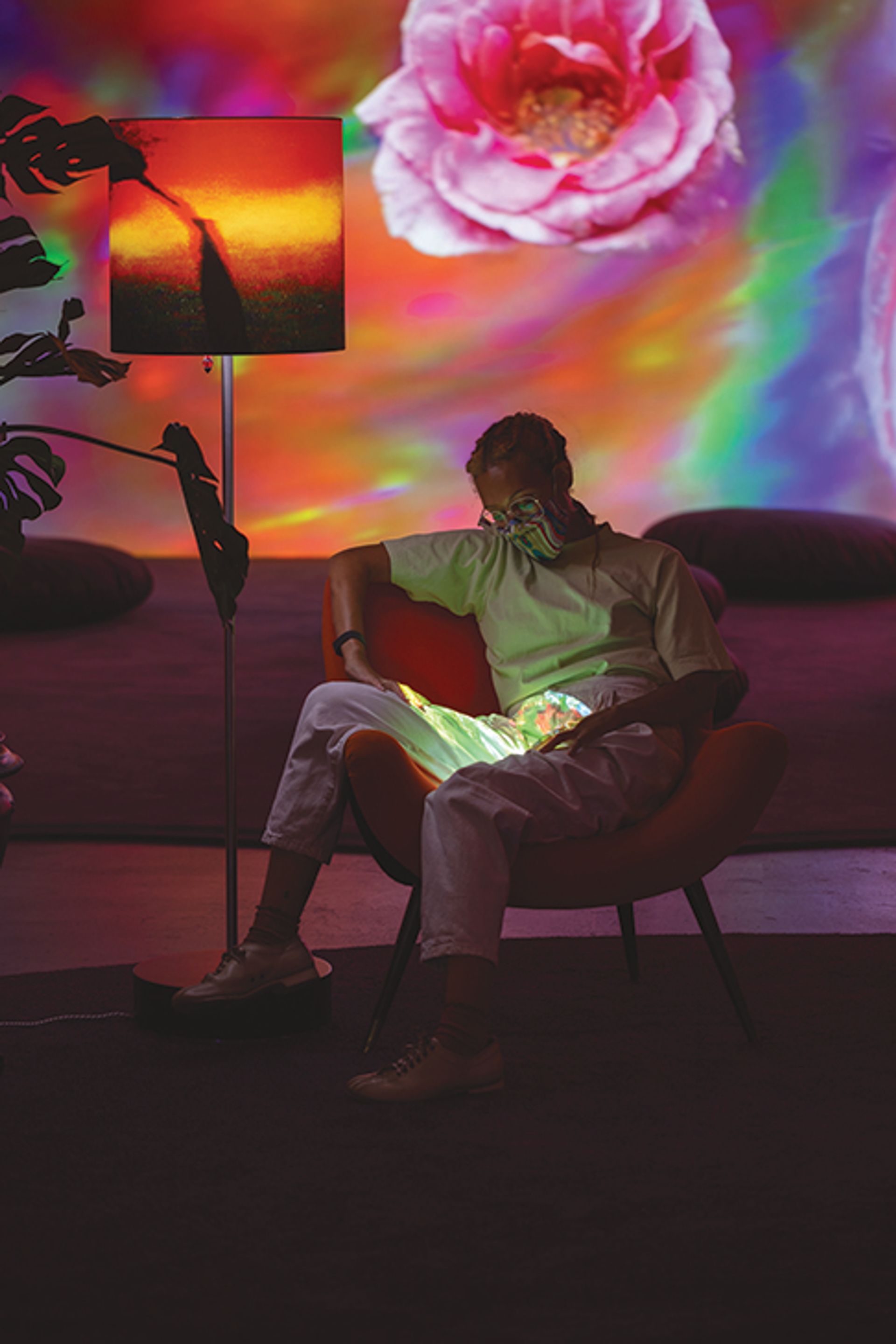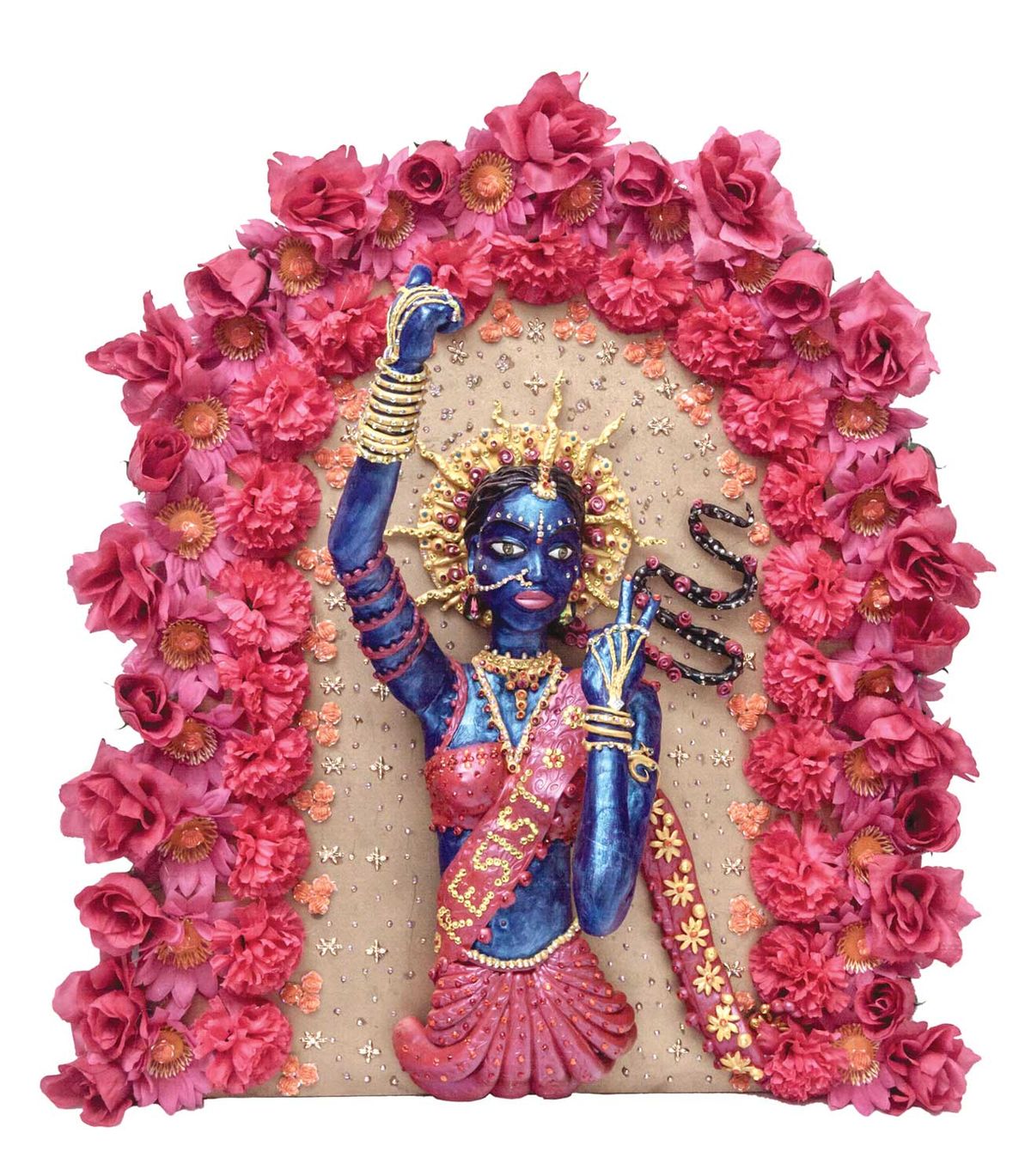Jaishri Abichandani: Flower-Headed Children, Craft Contemporary, until 8 May
This mid-career survey devoted to the Brooklyn-based Indian artist and curator Jaishri Abichandan includes a constellation of multimedia sculptures in which the artist appropriates devotional Hindu and pre-Vedic art to tell modern stories related to cultural identity and gender politics. Works such as End Game (2018)—showing an ominous spirit emerging from the womb of a goddess—and others blend folk and vernacular motifs, animating effigies that are imbued with both autobiographical and mythological themes.
In her practice, Abichandani challenges the often-eroticised nature of these numinous objects and their traditional symbolism. In the late 1990s she founded the South Asian Women’s Creative Collective, a non-profit organisation that champions women, transgender, queer and gender non-conforming artists creating work centred on social activism. The exhibition has been curated by Anuradha Vikram, whose book Decolonising Culture: Essays on the Intersection of Art and Politics (2017) compiles writings dealing with race and gender issues in the contemporary art world.

Martínez Celaya’s oil-and-wax The Faithful (2019) greets visitors to his Fisher Museum of Art show
Courtesy of the artist and Miles McEnery Gallery
Sea Sky Land: Towards a Map of Everything, USC Fisher Museum of Art, until 9 April
Although the artist Enrique Martínez Celaya has lived and worked in Los Angeles on and off since the 1990s, Sea Sky Land: Towards a Map of Everything at the Fisher Museum of Art at the University of Southern California is his first museum survey in California since 2001. His monumental The Faithful (2019) greets visitors at the opening of the show. More than 12ft high, the painting of a giant full moon illuminating white roses and butterflies is an impossible concoction of longing and reverie. “Even though people typically describe it as a heroic scale,” the artist says, “to me, it’s the anti-heroic scale.”
The artist says his approach is informed by his background in physics. “Quite often in the arts, people focus on the objects of the dynamic. But I’m particularly interested in the forces at play in the dynamic,” he says. Those forces, he suggests, include memory, distance, time, redemption, confusion, crisis and longing.

An illustration of the magical castle that is the subject of one of
Hayao Miyazaki’s most popular films, Howl’s Moving Castle
Photo: Courtesy of the Academy Museum Foundation; © 2004 Studio Ghibli-NDDMT
Hayao Miyazaki, Academy Museum of Motion Pictures, until 5 June
Fans of the groundbreaking Japanese film-maker Hayao Miyazaki can step into the animated worlds of My Neighbor Totoro (1988) and Howl’s Moving Castle (2004) at the Academy Museum of Motion Pictures. For its inaugural special exhibition, the museum has an immersive retrospective of the director’s work that visitors enter through a tree-like installation, leading to galleries with drawings and production materials from his films, and a special room where viewers can lie back and watch an animated sky, like the central character in Kiki’s Delivery Service (1989).
“This is what film exhibitions should be, because this is what our medium is. It’s like entertaining. It’s immersive,” says the shows curator Jessica Niebel, who co-organised the retrospective with assistant curator Raúl Guzmán, in collaboration with Japan’s Studio Ghibli, which Miyazaki co-founded in 1985.

In full colour: a visitor explores Pipilotti Rist’s MOCA show
Photo: Zak Kelley; Courtesy of Museum of Contemporary Art
Pipilotti Rist: Big Heartedness, Be My Neighbor, Museum of Contemporary Art, Geffen Contemporary, until 6 June
The Swiss multimedia artist Pipilotti Rist has taken over the Museum of Contemporary Art’s (MOCA) Geffen warehouse for her first West Coast survey. Room-sized screens show early video works, while visitors navigate through strings of hanging lights and moving projections that swirl across the floors, or peek into the windows of a two-storey house to view colourful, otherworldly scenes. “The only thing missing from this generous psychedelic excursion through the digital looking glass is a selection of cannabis edibles in the museum shop,” wrote the Los Angeles Times critic Christopher Knight when the exhibition opened. So be sure to stock up before your next visit.


